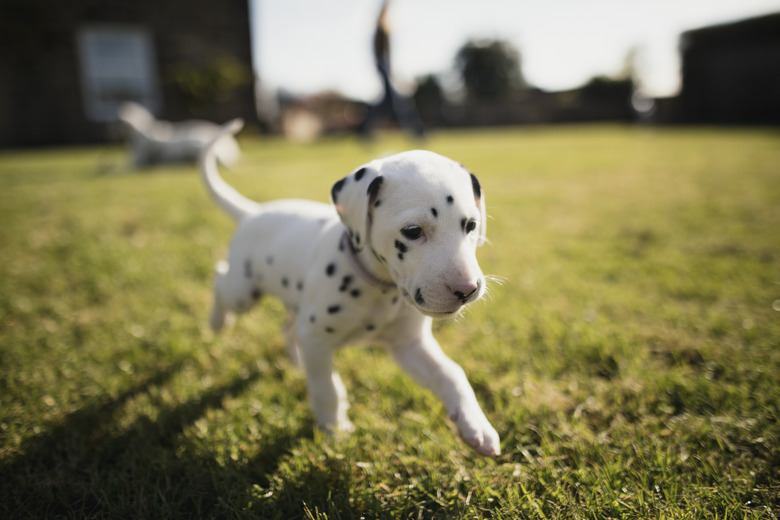Do Puppies Change Colors As They Grow?
When it's been a while since you've seen a friend's child, you're probably amazed at how much they've changed. When you haven't seen a friend's dog since it was a puppy, you know it will have grown, but you might not recognize a dog with a different shade and type of coat than it had as a baby. Many puppy coats do change considerably from puppyhood to canine adolescence. The change may include not only colors but coat patterns, too.
Puppy coats
Puppy coats
The American Kennel Club notes that when puppies are born, they have a single fluffy and soft coat. A single-coated breed will lose its puppy coat, and adult hair grows in, but double-coated breeds will develop their second coat as they mature. It's not uncommon for the puppy's adult coat color to end up a different hue than the puppy coat. While the adult coat is darker than the puppy coat in many breeds, there are those in which the adult coat is lighter.
While the age at which the puppy coat sheds varies by breeds, most puppies lose their original coats by the age of six months. Some breeds — the Pomeranian is an example — may not have their full adult coat come in until the age of 2.
Dramatic coat changes
Dramatic coat changes
As most puppies grow into adulthood, the changes in their coats are noticeable but not dramatic. That's not the case with certain breeds, in which the changes as they develop mature coats are truly stunning. Perhaps the best known of these breeds is the Dalmatian. Cruella De Ville wouldn't have been interested in the coats of very young Dalmatian puppies, as they are born white and spots aren't apparent until they are several weeks old.
Bedlington terrier puppies are born with either soft blue or liver coats, according to Dogster. As they age, the coat becomes a mix of soft and hard hairs, and many Bedlingtons turn into the sandy shade that makes them resemble lambs. The Kerry blue terrier is named for its bluish coat, but puppies are born black and don't achieve their new coat shade until they are between the age of six-to-18 months.
Then there's the Shih Tzu. If you love the breed but want a specific color, adopt an older dog. Only a black and white Shih Tzu will keep the coat color he was born with. With the rest, it depends on genes. A Shih Tzu with a "G" gene will fade in color and look noticeably lighter by his first birthday, while a dog of the same breed with a Chinchilla gene will eventually become a rich silver, like the gene's namesake rodent.
Beagles may have a total of 25 color combinations, made up of 10 colors. However, the color change may come on quickly in puppyhood, and often. The AKC permits a beagle breeder to change the color on a puppy registration up to three times before it becomes final. The owner may still end up with a dog whose color doesn't match her registration.
If color matters
If color matters
If you have your heart set on obtaining a purebred dog of a certain shade or pattern and it's a breed with a color subject to substantial changes, you don't have to wait and purchase a mature dog. Instead, ask the breeder if the parents had any previous litters together. If the answer is yes, ask to see photos of those puppies when they were young and after they matured. You can get a good idea of what the current litter members will look like when grown, although the method isn't foolproof.
